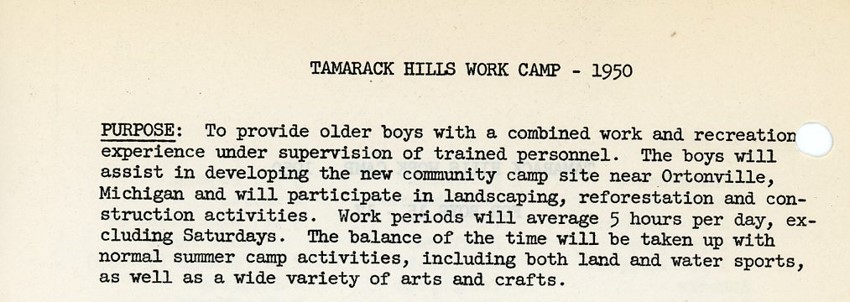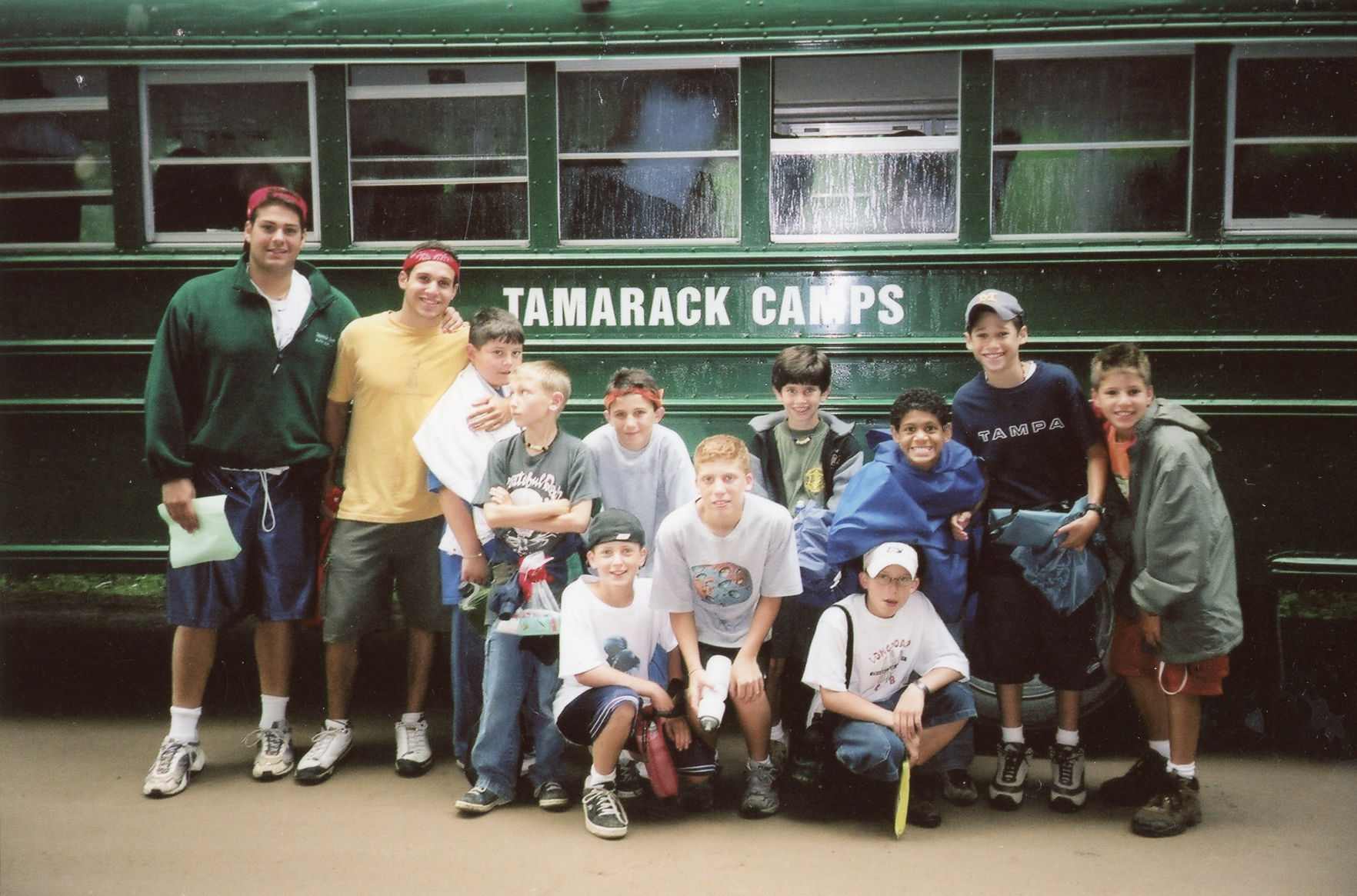When school is out and the weather heats up, there is a special place rooted in the hearts and minds of kids across Metro Detroit (and beyond!): Camp Tamarack. While hundreds of kids will trek to Ortonville this summer, their parents and grandparents might be more familiar with the lesser known “Fresh Air Camp.” What we know today as Camp Tamarack has actually been around since 1902, long before the famous green bus ever trekked north. So, how did the camp end up there?
When the Fresh Air Society began in 1902, its founders, Blanche Hart and Ida Kopple, were simply trying to give a group of children a day of fresh air, away from the smog of the city. These afternoons in Belle Isle were met with such success that they experimented with an overnight camp. And, well…this part of the story you probably know. The camp continued to grow in various locations, including Venice Beach and Brighton.
By the late 1940s, Fresh Air Camp in Brighton was booming. And its director, Irwin Shaw, was already looking ahead. He noted that when the War Babies (those born during the WWII era) came of age, there would be an increased demand for summer camps. One that he felt could not be met in their current location. So, he set out to find a new home.

In 1950, Shaw came across a private, 600-acre wooded tree farm surrounded by two lakes in Ortonville, Michigan. It was called Tamarack Hills, and it was perfect. Except for one small issue…a small corner of the property was owned by a different landowner, and from there, the lake could be accessed by anyone. Negotiations began and ultimately, the two parcels were purchased for a total of $100,000 (today the equivalent of $1.3 million).
Fresh Air Camp had a new home and a new name – Camp Tamarack! And it was time to tackle the next problem – clearing the land so cabins and other buildings could be constructed. The answer seemed obvious: teen campers! For the very reasonable price of $45 for three weeks (paid to the camp, not the teens), parents could send their sons, ages 15-17, to do landscaping, restoration, and construction for five hours a day. Afternoons would end with time for swimming, canoeing, and other camp activities.
With the help of the building committee chair, Charles N. Agree, along with camp designer and architect Glenn Wallace and builder Al Taubman, plans commenced. A village model was envisioned, with each village consisting of five cabins and a lodge. Each cabin would sleep eight campers and two staff. The lodge would serve as the dining room and recreation hall, and there would also be bathroom facilities.
In order to realize the village concept, the food system would have to be decentralized. Meaning, instead of a single dining hall for all, campers would stay in their individual villages at mealtime. In 1952, a food factory was built, where three times a day, “kosher-style” meals were prepared, vacuum-packed, and shipped to the villages.
The first set of campers arrived at Tamarack in 1953. At that time, they had five cabins ready and were able to welcome 44 girls, ages 12-15.
Since that first summer in Tamarack, the camp has changed significantly. The land in Ortonville has increased, many villages have been built, and Outposts have been added. What might Blanche Hart and Ida Kopple say if they could see their humble Fresh Air Camp now!
The Leonard N. Simons Jewish Community Archives at the Joan Meyers Jampel Center for Michigan Jewish Heritage holds a significant amount of historical records related to Fresh Air Society and Camp Tamarack, including documents and photographs.
So You Think You Know is a new series that will explore a different area of Detroit’s Jewish history each month through the collections of the Joan Meyers Jampel Center for Michigan Jewish Heritage. You may think you know the story, but the truth is in the documents!

